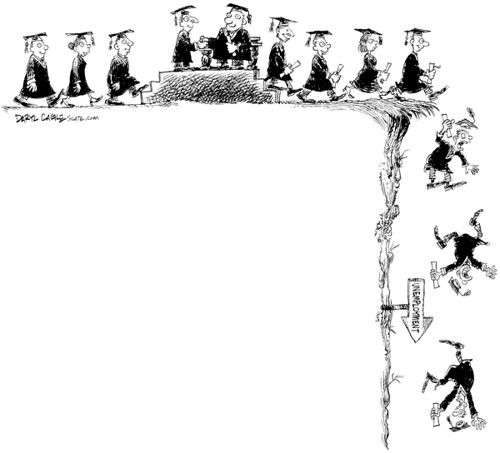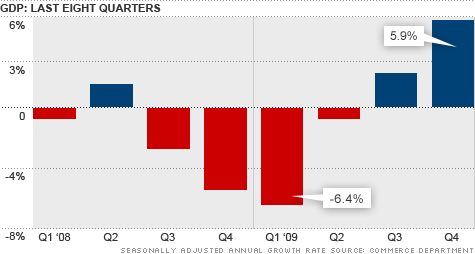
This cartoon depicts a college student graduating, then immediately falling off the steep cliff into unemployment. This is a common problem with recently graduated students. The unemployment rate is currently about 9.7%, so inexperienced, recently graduated "kids" are in low demand for jobs. Some people believe that highly selective, and pricey, colleges still offer a better return on investment than non-elite schools. With all the debt upon graduation as well as high unemployment rate for recently graduated students, perhaps it’s no surprise that more adults are moving home and delaying having kids.


